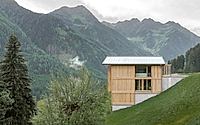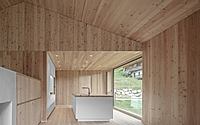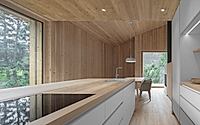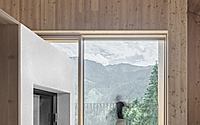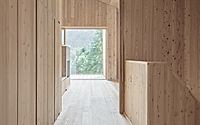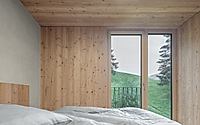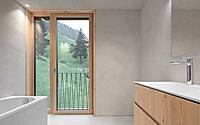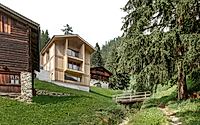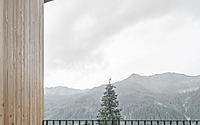Haus Eggemoa by Daniel Ellecosta Mirrors South Tyrol’s Historic Mills
Daniel Ellecosta designed this home in Mühlwald, Italy, drawing on the typology of historic mills. Named Haus Eggemoa, the house reflects a strong affinity with simple agricultural building typology.

Mountain Village Context Informs Design
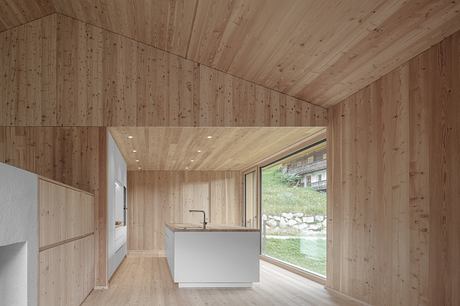
Log construction on a solid natural stone base, characteristics of historic mills, have been reimagined into clean, linear contemporary design elements. A massive wooden structure sits on a sandblasted concrete base. The roof ridge slopes gently towards the valley, blending harmoniously into the mountain landscape.
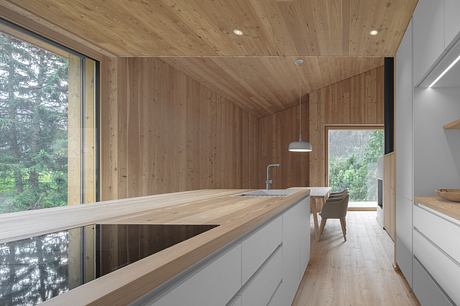
Simple Materials Prioritize Sustainability
Additionally, the building emphasizes natural integration into its terrain. This is evident in its elegant, albeit defined appearance, fitting for the location. The west side also features a roof and ground level that run along the slope, complementing the residential space.
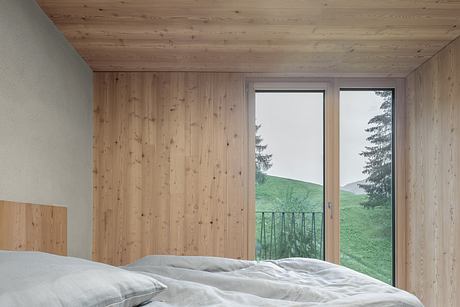

Interior Finishes Echo Construction Method
The ground-level spatial planning includes the home’s private areas. The bedrooms, bathroom, and an elegant passage connect the living and outdoor spaces. From the master bedroom, a hidden corridor with a dressing room leads to the weather-protected outdoor extension nestled in the hillside.
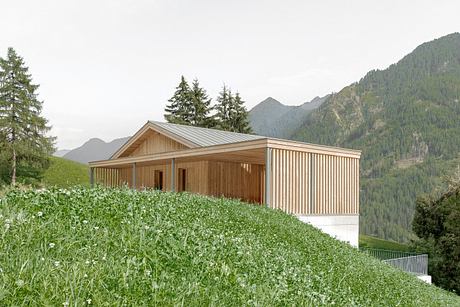

The spacious living area with a stove, as well as the kitchen with a utility room, storage room, and a guest WC are located at this entry level. The top floor’s full opening towards the ridge create a generous sense of space. The centrally positioned wood stove serves as a simple dividing element, with the kitchen discreetly arranged behind it.
Sustainable Materials Sourced from Farm’s Forest
The use of sustainable materials in Haus Eggemoa is emphasized in the wood and concrete choices. The stone base is made of exposed concrete, featuring local aggregates. All exterior finishes are crafted in local larch wood.
The timber used was sourced entirely from the farm’s own forest, processed into solid wood panels with their own certification. This choice eliminated the need for further insulation as the untreated wooden walls have sufficient thickness.
On the second basement level, a workshop with adjacent storage room is included. Here, a discreet path leads to the barn and agricultural buildings below. This inclusion effectively completes the spatial offering in a fitting manner.
Large window openings frame views of the surrounding mountain landscape, creating a connection to the beautiful surroundings. The frugal appearance matches the location, emphasizing naturalness, locality, and integration into the landscape.
Photography by Gustav Willeit
Visit Daniel Ellecosta
